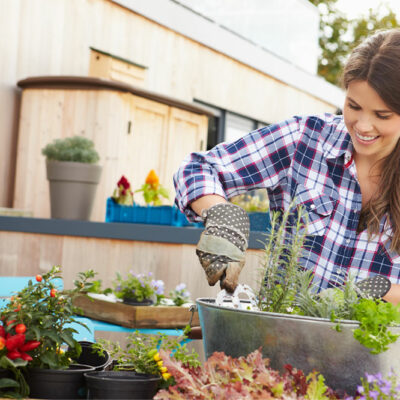
Top 7 student laptops of 2023
In the digital age, learning and creativity utilize electronic devices more than they ever did before. This is why, for school and college students, heavy backpacks crammed with notebooks and pens have been replaced by laptops. Student laptops can be anything a learner wants them to be—a data storage solution, a teacher, a tool to give shape to concepts, or an idea generator. So, here are some of the top student laptops of 2023:
1. Samsung Galaxy Book3 Pro 360
The sleek and foldable Galaxy Book3 Pro 360 is arguably the best student laptop one can find. The laptop comes with an almighty Intel core i7-1360P CPU, 16 GB of RAM, Intel Iris Xe integrated graphics, 512 GB of SSD storage, and a beautiful 16-inch AMOLED touchscreen display with a 120Hz refresh rate and 2880 x 1800 resolution. Available for $1,599 at the moment, this device is a great package considering its excellent specs and highlights, like a 360-degree swiveling screen, 13.5 hours of battery life, and a razor-sharp 1080p webcam. All in all, students looking for a stunning yet feature-rich, high-performance laptop can definitely consider buying the Samsung Galaxy Book3 Pro 360.
2. Acer Swift X 14
Students often look for reasonably priced and compact laptops, for which the Acer Swift X 14 can be a good choice. This device comes with a powerful 13th-Gen Core i7-13700H processor and an equally capable Nvidia RTX 4050 graphics card. Its main selling point, though, is its incredible 14.5-inch OLED display that offers incredible visuals and depth. One of its notable features is its sleek design—it is just 12.9 inches wide and 0.7 inches thick and weighs about 3.31 pounds. Priced around $970, this laptop can be an excellent pick for students.
3. Apple MacBook Pro 14 M2 Pro
Many MacBook users consider the laptops to be indispensable, and for good reason. It comes with fantastic specs like an integrated 16-core graphics processing unit, a powerful 10-core Apple M2 Pro processing unit, memory capacity ranging from 8 to 96 GB, and a fluid and immersive 14-inch Liquid Retina XDR display with a resolution of 3024 x 1964. A heavy price tag of $2,000 may be a drawback for some, but at that price, one can get great features such as a 24-hour battery range, a display that shows all content in stunning HDR beauty, and regular hardware updates from Apple. So, the Macbook Pro 14 M2 is a solid, if a little expensive, choice for students to learn and create without limits.
4. Lenovo IdeaPad Flex 3 Chromebook
Chromebooks are also incredibly popular among students for their intuitive user interface and powerful processors. Lenovo’s IdeaPad Flex 3 Chromebook is an ideal budget-friendly choice here. With the laptop, one gets a MediaTek MT8183 processor (2.0 GHz), RAM of 4 GB LPDDR4, 64 GB eMMC Flash Memory, and an 11.6 inch full HD display with a resolution of 1366 x 768. If students can look past this laptop’s somewhat basic appearance, then they will appreciate its host of features, which include a battery life of 16 hours, Google’s G-Suite compatibility, and in-built WiFi 6. Priced between $300 and $350, this can be an affordable option worth considering.
5. Dell XPS 13
Windows laptops are known for their durability and exceptional performance around the world. For students looking to buy the best Windows premium laptops, this Dell model ticks all the right boxes. It comes with a powerful CPU (up to 12th Generation Intel Core i7) and a 32GB RAM (LPDDR5). It also offers display options—a 13.4-inch FHD+ InfinityEdge Non-touch display with a resolution of 1920 x 1200 and a 13.4-inch UHD+ InfinityEdge touch display with a resolution of 3840 x 2400. Users also get massive storage of up to 1 TB M.2 PCle SSD with a dedicated graphics card that enables them to run premium software such as Adobe Premiere Pro. As this is one of the premium options worth considering, this laptop is priced in the range of $1,100 to $1,130 at various retail stores.
6. Asus Zenbook 14 OLED
This laptop is priced at $900 to $1,000 at stores, making it a relatively affordable option for students. The Asus Zenbook 14 comes with a powerful AMD Ryzen CPU and is sturdy enough to pass several rigidity evaluations, such as the famous 2 MIL-STD-810H military-grade tests. It is also incredibly portable, making it an ideal tool for students looking to carry their laptop everywhere to perform a host of tasks. Some of its main value propositions are its 14-inch OLED touch screen, long battery life, and multiple ports that do not need dongles. All in all, while the ASUS brand may not carry the glamor of some of the other options on this list, the Zenbook 14 is just as good, if not better, than many expensive devices listed here.
7. Microsoft Surface Laptop Go 2
Microsoft’s Surface Laptop Go 2 is a budget-friendly device that comes with top-notch specs, including an Intel Core i5-1135G7 processor, a processor speed of 2.4 GHz, 8 GB of RAM, and a boot drive capacity of 256 GB. It also offers a native resolution of 1536 x 1024 in its display, a beautiful 12.4-inch LCD screen, a screen refresh rate of 60 Hz, a graphics processor of Intel Iris Xe, Windows 11 compatibility, and a whopping 12:35-hour battery life while weighing just 2.48 lbs. Priced at anywhere between $600 and $700, this is an underrated choice of laptop for students.
It is important to note that all the prices mentioned on the list are subject to change based on factors like ongoing sales, new product launches by the specific brand, and availability of laptops. So, it is important to look up deals and compare prices on different platforms before making a purchase.


